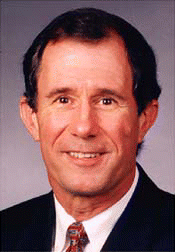One form of simulation, virtual reality (VR), has slowly been incorporated into curricula by medical schools across the country in recent years, in reaction to changes in training. As traditional methods of animal and cadaver dissection and working with live patients have become problematic, VR is picking up the slack. Using VR helps medical schools overcome the ethical, cost, and practical barriers to effective learning that decreased access to traditional training modalities presents. And incorporation of medical simulation into board certification in internal medicine, family practice, and some surgical specialties such as gastroenterology has left medical schools rushing to acquire the equipment and support staff necessary to implement VR properly.
Explore This Issue
July 2008What Is Medical Simulation?
Medical simulation is an all-purpose term covering everything from using a block of resin or wood for would-be surgeons to get the feel of handling a drill to a surgical simulation so sophisticated that it reproduces an individual patient’s anatomy perfectly, so that the surgeon can practice a delicate procedure tailored to that patient before undertaking the actual surgery. In between these extremes lie mannequins-either body parts such as an arm to practice starting an IV, or a specially designed unit such as Martin, a head and neck mannequin developed by military contractor Lockheed Martin for teaching endoscopic sinus surgery. Medical simulation also includes actors playing the part of patients, sometimes using simulated body parts to enhance the learning experience.
Computer-based medical simulations, or VR, enhance learning by using visual, auditory, and haptic feedback to help physicians feel that they are making decisions and performing procedures in real life. VR also allows participants to repeat the simulation as many times as necessary to attain a level of comfort with the task. It incorporates a variety of resources, including CT and MRI data, computer-generated images, video cameras, models, and sensors for learners to practice in lifelike environments.
A rapidly growing type of medical simulation, far removed from the meticulous virtual otolaryngology-head and neck surgery world, is emerging from collaborations among medical schools, the videogame industry, and the US military. These simulations closely resemble video games and throw the learner into the adrenaline-pumping fast pace of the emergency department or battlefield. Although they may enhance clinical skills, their main purpose is for practicing teamwork and rapid-fire decision-making. For example, Pulse!!, a user-friendly VR platform developed at Texas A&M University-Corpus Christi with $12 million from the Office of Naval Research and support from BreakAway, a Maryland-based video game developer, is used to train doctors, nurses, physician’s assistants, and other emergency personnel. Another popular option, for computer savvy professors and physicians, is Second Life. This inexpensive open-source platform is used to host medical simulations that students can access online. Second Life users can create their own avatars to walk through VR hospitals, emergency departments, patient rooms, and surgical suites.
Medical Simulation and Otolaryngology
Medical simulation has already revolutionized medical education in primary care disciplines and some surgical specialties, but faces a tougher road in otolaryngology. The pioneers in otolyarngology-head and neck surgery, whom you will meet in Part 2 of this series on medical simulation, have done extraordinary work with surgical simulations but have also encountered serious funding obstacles. Even joining forces among themselves and forming alliances with neurosurgeons, computer scientists, and engineers, they have not found the approximately $15 million in funding required to validate simulation results at the level required to be incorporated in board certification.

Leave a Reply